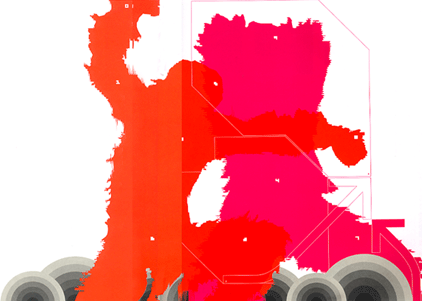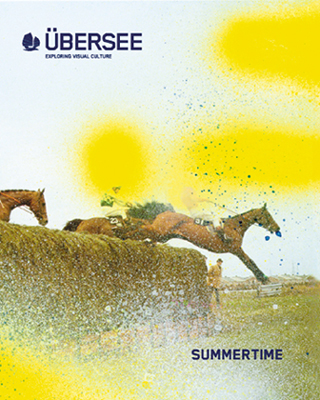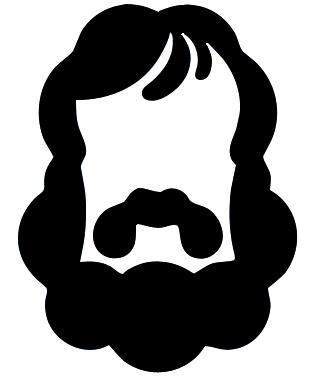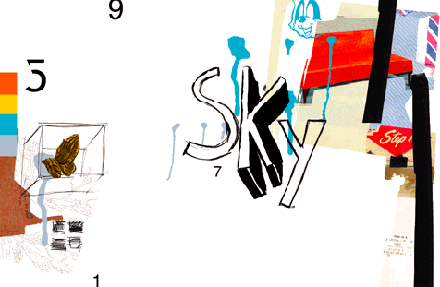ROBERT KLANTEN
PEOPLEText: Jonathan Carr
Die Gestalten Verlag is a publishing company that has a meaning “creating things” in German. Since it has started since 1997, it can be said that this is a young company but many artists have released books from DGV. “Ubersee” magazine is one of the latest publications and this is a special magazine that features only designs without any advertisements and reviews. It is the digital time now but books from Gestalten shines more brightly than others. Interview with Robert Klanten, the president of DGV.

DSOS1: The User’s Manual by Designershock; Die Gestalten Verlag, 2001
Why don’t we start with a little bit about your history, and what lead to the inception of Die Gestalten Verlag. You trained as an Industrial Designer. How do we get from there to founder of the preeminent design publishing house? What were the beginnings of DGV?
Andreas Peyerl, Markus Hollmann-Loges and I studied classical Industrial Design in Essen. Andreas and Markus took off to Berlin around 90 while I spezialized on Design theory and marketing. By around 1988 we were asked to organize and curate a prototype design show as a part of the world’s biggest consumer fair in Frankfurt. The Fair gave us a carte blanche to create our own environment and select whatever we liked under a self defined theme on app. 5.000sqft in the middle of the central hall. The themes were eg.: “Designs Fiction”, “Move”, “Ugly” etc and we ran infamous motto parties events on the weekend. We also printed catalogues for the occasions which were the first books we did.
Index-A by Charles Wilkin; Die Gestalten Verlag, 2003
Around these events we got to know a lot of graphic designers, projection artists, programmers, go-go dancers, DJs, musicians who were involved in the upcoming underground and Techno scene. Soon it seemed much more appealing creating party flyers and record covers on both sides of the former Berlin wall than scraping foam models at BMW. In 92 we stopped doing the Fair and 94 the first book Localizer 1.0 was put together, a compilation on all these designers, labels, clubs, artists and projects around that time. Since then Andreas and Markus run the design studio while I am doing the publishing co. , the “verlag”. As we did not have any money we asked fanzines to include order forms for the book in their publications. More than 1.000 order forms accumulated worth DM 50.000. We presented them to the bank they borrowed us the money, we printed 5.000cps, sold them out in 3 month, paid bills and sent out millions of free copies to everyone involved and were close to broke again. With the upcoming DTP revolution there was a growing interest and demand in visual culture. I got acquainted with the idea of becoming a publisher, raised some money, did some homework and around 1997 DGV seriously took off with the release of 4 titles.

Ubersee 3; Die Gestalten Verlag, 2003
What role do you feel the Internet has played in the design world and its evolution? How has it affected the evolution of Die Gestalten Verlag?
The Internet is important as a research tool, but I feel the effect of making communication and organization much easier is even more important. Certainly the requirements of Internet has helped the upcoming of vector design, but I feel that positive effects on communication where at least as important as its aesthetic influences.

Buro Destruct 2 by Buro Destruct; Die Gestalten Verlag 2003
Never before has the line been so blurred between designer and artist, in the digital realm we see many designers working laboriously on personal and collaborative projects of a non-commercial nature. What are your thoughts on the evolution of these blurring distinctions? How do you feel it has impacted DGV? What role do you see Die Gestalten Verlag playing in it? What is your position on the question of designer as artist? What if any distinctions between the two concepts do you see in the current environment?
I may come up with two theories models:
a) The distinction between Art and Design seems to be lying more in the marketing paths (curator and client) than with the content of the work. Both ways offer different possibilities and limitations. A lot of designers imagine to change sides and become “artists” once they are through the groundwork of hassling with clients and … then get really rich and snobby.
b) Art is Art and Design is Design and there are very little terrains which overlap. Art must be free and radical, Design is about solving (other peoples) problems. Design is about organizing space while Art is about the structure ideas, the unexpected and uncharted.
You may decide which theory you’d like to apply based on the situation and your personal favour. Both theories work. Art is about ego, Design is about interaction and one would not function without the other. Art can be enigmatic, Design must not. We are fascinated by both freedom and discipline, but we are suspicious about DIY artists or/and designers who are into it for the wrong reasons. Graphic Design became successful as it provided a platform for a lot of talents to develop their own ideas and present them to a wider public WITHOUT external sometimes irrational limitations coming from curators or clients. We are trying to prepare and constantly redefine and enlarge the platform.
Read more ...






